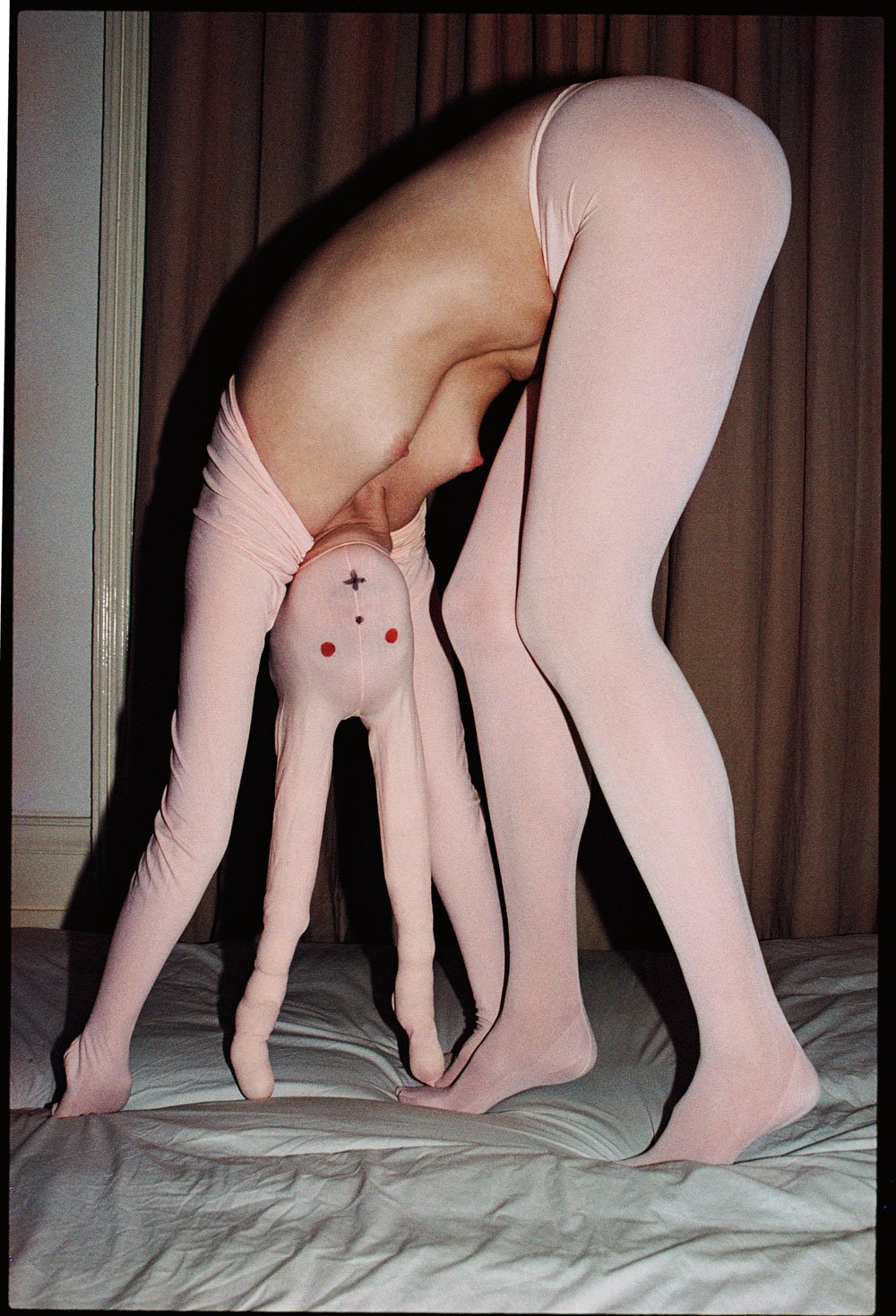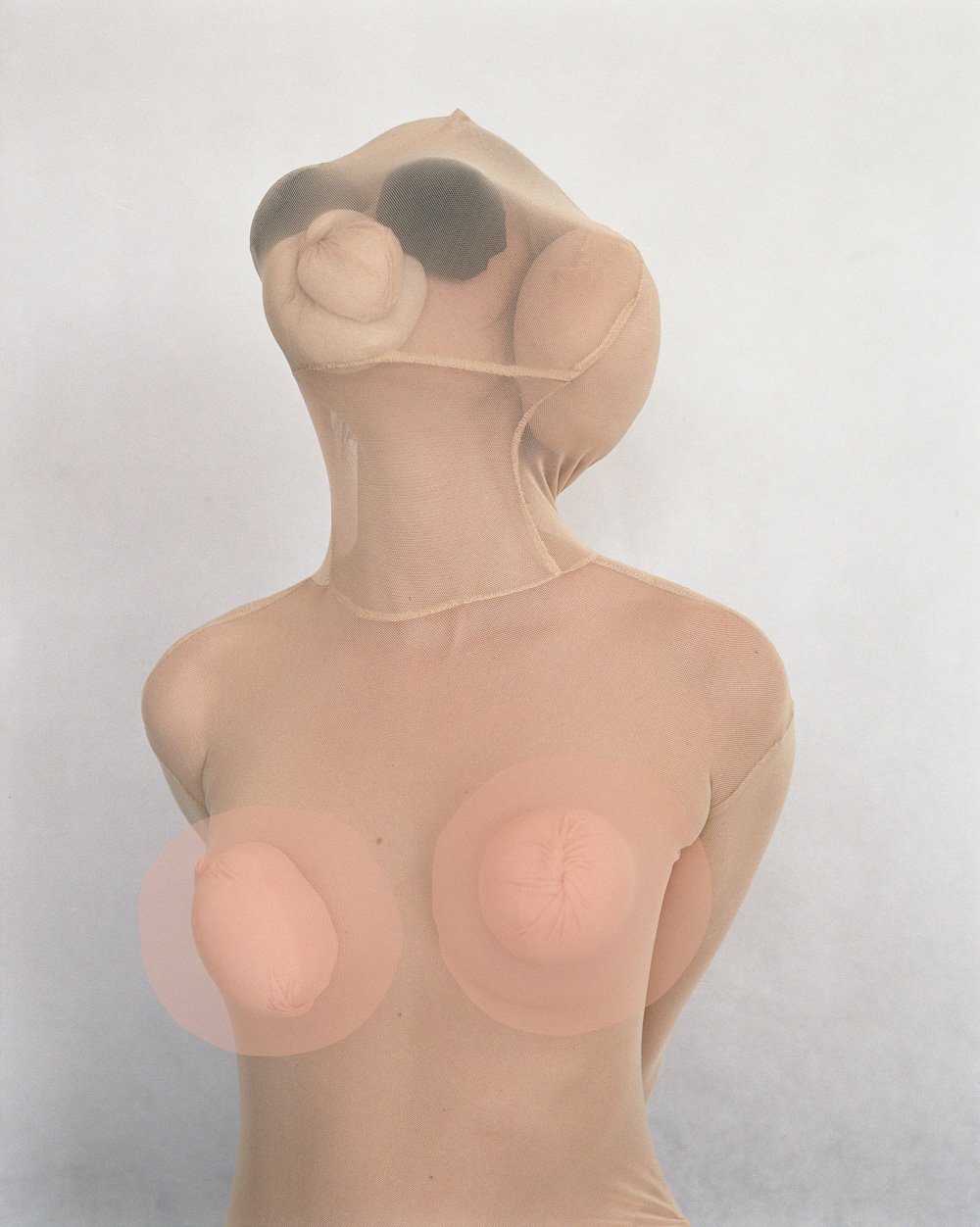Polly Borland’s Unique Eye
Words by Erin Bromhead
Polly Borland is an Australian portrait photographer and photographic artist who began shooting when she was 17.
Born and raised in Melbourne, Borland set off for England at 29 with her then boyfriend, now husband, John Hillcoat. ‘ kind of knew I was going and probably wasn’t coming back,’ she says. Borland was right—after her arrival in 1989, she would call England home for the next 20-plus years. Although she has spent more of her life abroad then not (she now resides in Los Angeles), Borland still calls Australia home. It’s very important to have a creative presence there, because I identify as Australian,’ she says.
There are few photographers you can credit with shooting Nick Cave, an entire book’s worth of men dressed as babies and the Queen all in the space of a few years. Actually, I’m pretty sure there is only one—and it’s Borland. In the 90s, a friend told her about the secret world of adult babies, a phenomenon known as ‘adult baby syndrome,’ and she was captivated. ‘I was doing portraiture for magazines and sort of off-beat reportage, and a friend of mine told me—knowing I was interested in, y’know, the weird and the wonderful,’ she says. ‘I then went looking for those people, found them and photographed them for five-to-seven years all around the world—England first, then France, then America, then finally Australia.’ Her book, The Babies, was released in 2001.
Two years after the release of The Babies, something unexpected happened. Borland was commissioned by Buckingham Palace to commemorate the Queen’s golden jubilee by shooting her portrait. ‘Well, concurrently at the time of me doing The Babies book, I was shooting a series of portraits of prominent Australians living in England for the National Portrait Gallery in London. And that produced a publication and a big show, so it was from that show that I got the Queen commission. I don’t really think they were even aware of The Babies book, and I think if the Queen had known about the book I probably wouldn’t have got the job,’ she says.
HER MAJESTY, THE QUEEN, ELIZABETH II
What happens when someone like Borland meets the Queen, though? Does she curtsy? ‘Well, I was given all these different options. I could curtsy, but I didn’t have to. I could shake her hand, but I didn’t have to. I could do any one of those things. Of course, I hadn’t really thought it through so I did everything. I shook her hand, I think I bowed, and I curtseyed, but the curtsy wasn’t really a proper curtsy. So I kind of just made a fool of myself basically,’ she laughs.
Among the thousands of famous faces she’s photographed—including Cate Blanchett, Michael Hutchence and even Monica Lewinsky—Nick Cave’s is by far the most constant. The two have enjoyed a collaborative, creative relationship for close to three decades now. ‘With Nick first and foremost it used to be about what the photos were going to be used for. But early on we became pretty good friends, so we just used to really talk about it.’
NICK CAVE IN A BLUE WIG
He’d go, ‘Oh, I kind of think I want this kind of thing,’ and then we would come up with what we came up with. With Nick it was good because we always collaborated. It changed over time because he became more and more comfortable with me and kind of trusted me more—he’s not the easiest person to photograph, and he didn’t really have a lot of faith in photographs of himself.
‘It took a long time for it to sort of sink in to him that every photo shoot I got something good. Even though he’s incredible looking and really striking, it was hard to bring out his handsomeness. He wasn’t very relaxed and it’s quite hard to photograph someone who doesn’t feel relaxed. But as time wore on, he became more and more relaxed and trusting in me that I would come up with the goods. I think the turning point really was the Let Love In cover because that was such a great shoot. During the actual shoot he was just like, ‘What the fuck is she doing?’ but then when I showed him the results he was like, ‘Oh, maybe she does know what she’s doing,’ she says.
UNTITLED III BUNNY, 2004
Borland’s offbeat and unconventional eye extends to her personal photographic art too. Her recent exhibition at the Nino Mier Gallery in LA featured a number of tapestries made by prisoners in England. ‘It’s a charity called Fine Cell Work, and they go in and they teach prisoners a new skill. It’s a charity that’s been going since the 70s. Basically, I get a digital pattern made of my photo, then they send the pattern and the wool to the charity, and then the charity goes into the prisons and gives the work to different prisoners.’
‘I had eight different tapestries made by eight different prisoners of the Queen image that I took, and I showed the wrong side because on the wrong side of the tapestries they all look different because they’ve been finished off differently by the different inmates,’ she says. For her upcoming exhibition at Melbourne’s Murray White Room she’ll be showing similar tapestries, but with less focus on the prisoners, conceptually. ‘I work very organically, but my images in a lot of instances are about the human condition. There are various psychological, existential states that I might be in. It sounds a bit much, but they’re kind of an emotional mindscape, does that make sense?’
TITS, 2017
Want to see more from our 2017 Photo Annual? You’ll have to buy it here.





